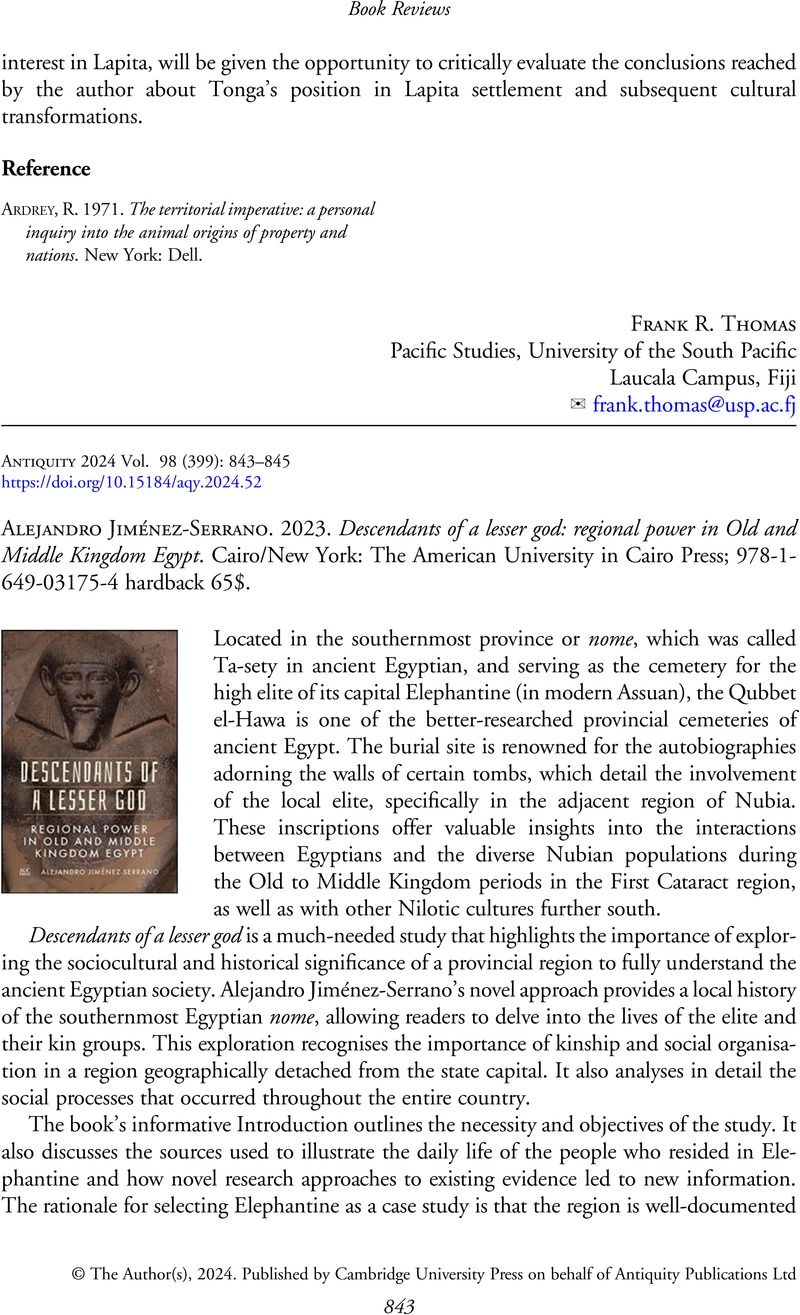No CrossRef data available.
Alejandro Jiménez-Serrano. 2023. Descendants of a lesser god: regional power in Old and Middle Kingdom Egypt. Cairo/New York: The American University in Cairo Press; 978-1-649-03175-4 hardback 65$.
Review products
Alejandro Jiménez-Serrano. 2023. Descendants of a lesser god: regional power in Old and Middle Kingdom Egypt. Cairo/New York: The American University in Cairo Press; 978-1-649-03175-4 hardback 65$.
Published online by Cambridge University Press: 15 April 2024
Abstract
An abstract is not available for this content so a preview has been provided. Please use the Get access link above for information on how to access this content.

- Type
- Book Reviews
- Information
- Copyright
- Copyright © The Author(s), 2024. Published by Cambridge University Press on behalf of Antiquity Publications Ltd


